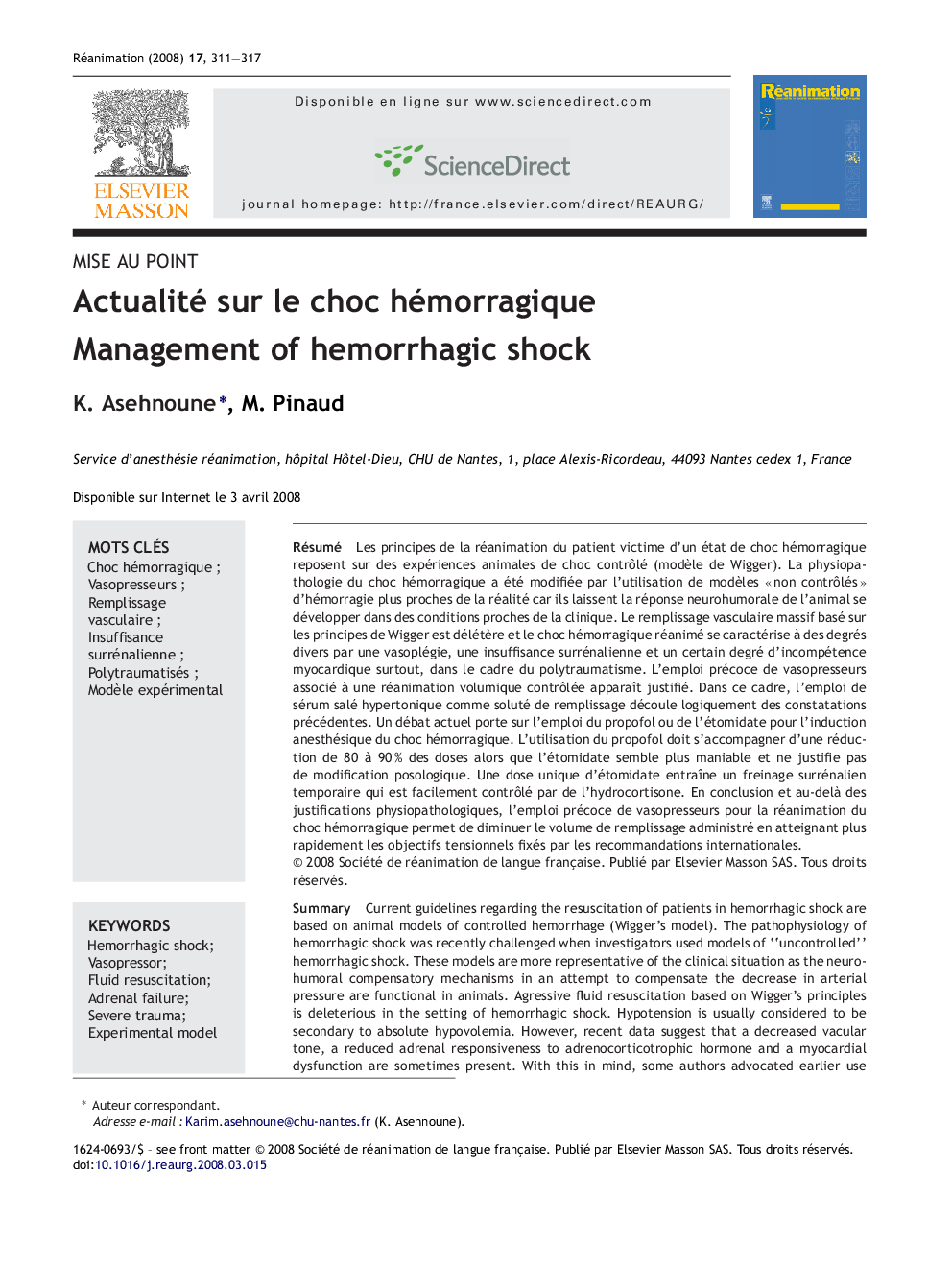| کد مقاله | کد نشریه | سال انتشار | مقاله انگلیسی | نسخه تمام متن |
|---|---|---|---|---|
| 2613327 | 1134862 | 2008 | 7 صفحه PDF | دانلود رایگان |
عنوان انگلیسی مقاله ISI
Actualité sur le choc hémorragique
دانلود مقاله + سفارش ترجمه
دانلود مقاله ISI انگلیسی
رایگان برای ایرانیان
کلمات کلیدی
PAMVasopressorVasopresseursModèle expérimentalFluid resuscitation - احیا سیالSevere trauma - ترومای شدیدHemorrhagic shock - شوک هموراژیکChoc hémorragique - شوک هموراژیکExperimental model - مدل تجربیAdrenal failure - نارسایی قلبیInsuffisance surrénalienne - نارسایی قلبی عروقیnoradrenaline - نورآدرنالین Remplissage vasculaire - پر کردن عروق
موضوعات مرتبط
علوم پزشکی و سلامت
پزشکی و دندانپزشکی
طب اورژانس
پیش نمایش صفحه اول مقاله

چکیده انگلیسی
Current guidelines regarding the resuscitation of patients in hemorrhagic shock are based on animal models of controlled hemorrhage (Wigger's model). The pathophysiology of hemorrhagic shock was recently challenged when investigators used models of “uncontrolled” hemorrhagic shock. These models are more representative of the clinical situation as the neuro-humoral compensatory mechanisms in an attempt to compensate the decrease in arterial pressure are functional in animals. Agressive fluid resuscitation based on Wigger's principles is deleterious in the setting of hemorrhagic shock. Hypotension is usually considered to be secondary to absolute hypovolemia. However, recent data suggest that a decreased vacular tone, a reduced adrenal responsiveness to adrenocorticotrophic hormone and a myocardial dysfunction are sometimes present. With this in mind, some authors advocated earlier use of vasopressors and a smaller volume of fluid resuscitation. Hypertonic saline solutions (HSS) represent a valuable tool in this area of “small volume resuscitation”. The use of etomidate or propofol in patients with hemorrhagic shock remains a matter of debate. The dose of propofol should be decreased by 80 to 90% when the dose of etomidate remains unchanged. Some authors suggested that an adrenal severe impairement can occur even with a single bolus of etomidate. However, hydrocortisone can be used to overcome this complication and etomidate is probably safer than propofol in severe hemorrhage conditions. With respect to recent knowledge in the pathophysiology of hemorrhagic shock, the use of a smaller volume of resuscitation, early use of HSS, and vasopressors may be able to resuscitate patients better and more rapidly. Moreover, earlier use of vasopressors would allow one to achieve predetermined hemodynamic goals with a lower volume of administered fluid.
ناشر
Database: Elsevier - ScienceDirect (ساینس دایرکت)
Journal: Réanimation - Volume 17, Issue 4, June 2008, Pages 311-317
Journal: Réanimation - Volume 17, Issue 4, June 2008, Pages 311-317
نویسندگان
K. Asehnoune, M. Pinaud,